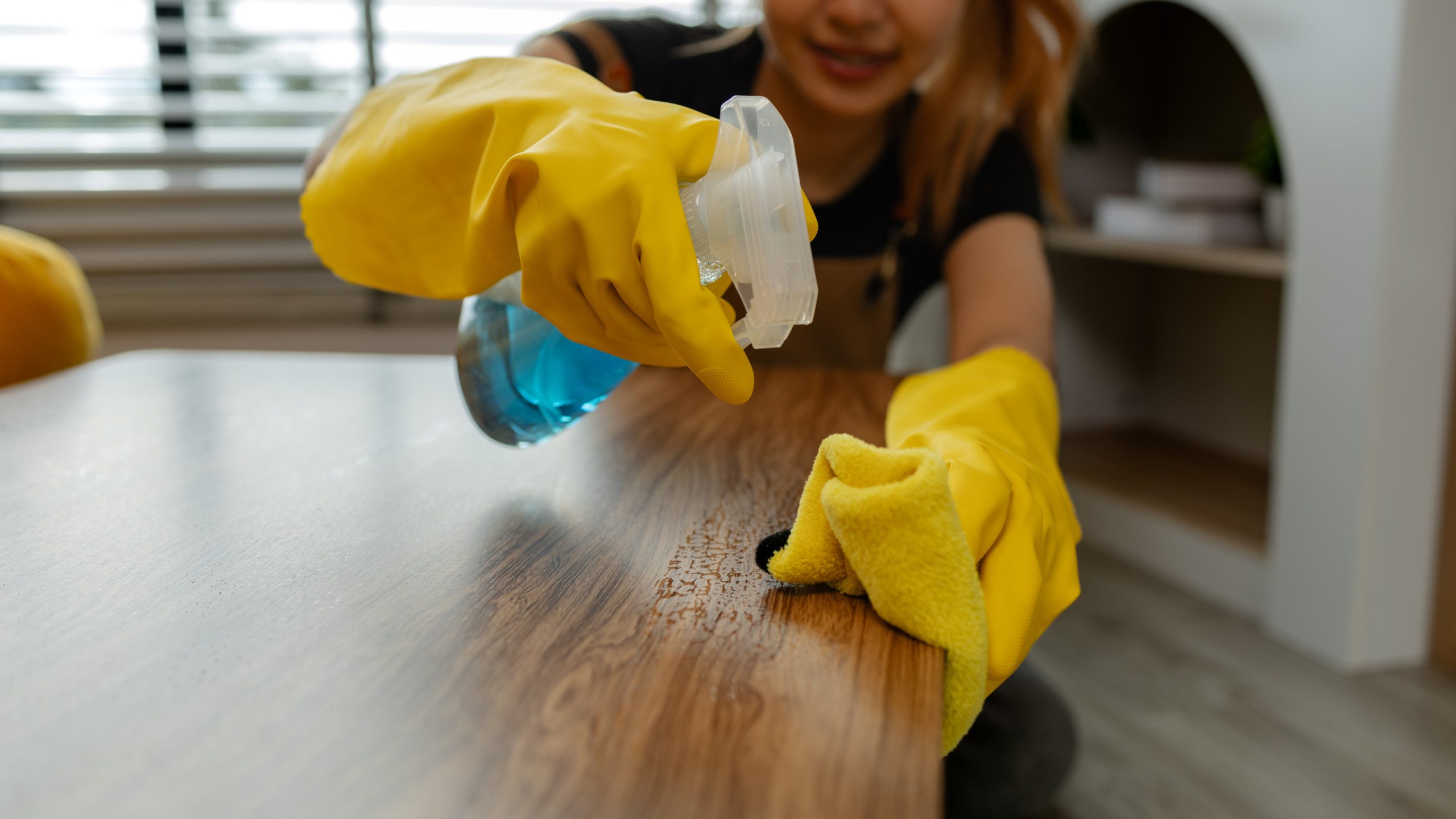
We all love a product that makes the house smell fresh—yet a pleasant fragrance doesn’t guarantee a genuinely clean surface. Many popular cleaning products rely on heavy scents and surfactants that smell good but leave behind residue or film. That residue can actually attract dirt faster, dull surfaces, and linger in the air or on skin. Understanding which products carry this hidden downside helps you clean smarter—not harder. Let’s dive into five commonly used cleaning products that smell clean but often leave unwanted buildup.
1. Heavily Scented Multi-Surface Sprays
Many fragrant multi-surface cleaners mask the scent of chemicals but leave behind sticky residue. Formulas often contain strong perfumes or solvents that linger even after drying. This residue acts like a dirt magnet, making surfaces feel tacky and attract more grime over time. Experts warn that overuse amplifies buildup—and sneaking scents don’t equal spotless surfaces. While the smell may be inviting, these cleaning products aren’t doing the best job long-term.
2. All-Purpose Cleaners High in Surfactants
All-purpose cleaners clean well initially, but many common formulas include surfactants and conditioning agents that leave a film if not rinsed thoroughly. Without a proper rinse, the cleaning agents remain as a clear layer that dulls shine and locks in dirt. Some contain phosphates or quaternary ammonium compounds that can also linger after evaporating water and solvents. While these cleaning products smell fresh and work fast, residue buildup often goes unseen until surfaces feel sticky. Always rinse or buff with microfiber after cleaning.
3. Fragrant Disinfectant Sprays
Disinfectants like Clorox Scentiva or similar products deliver germ kill power and pleasant aromas—but fragrance often comes at a cost. Perfumed disinfectants sometimes include oils or solvents that don’t fully evaporate, leaving a fragrant but sticky layer behind. This residue may trap dust, allergens, and residues of the cleaner itself, reducing effectiveness over time. Experts advise verifying that disinfectant contact times are followed—and surfaces rinsed afterward to reduce buildup. Smell may delight your senses—but residue can undermine cleaning completely.
4. Combined Cleaner‑&‑Polish Formulas
Products that promise “cleaning plus polish” often deliver shine—but only after leaving chemical residue behind. These formulas usually include silicones or oils to add gloss, but those same ingredients build up into a film that attracts more dust. You might get instant shine, but future cleanings get harder, and surfaces lose their original finish. Over time, fiber surfaces, glass, or stainless steel can feel dull rather than glossy. It’s better to clean with a dedicated cleaner, then polish separately if needed.
5. Oven and Degreaser Sprays With Strong Solvents
Heavy-duty oven and kitchen degreasers pack solvents that cut through grease—but often require rinsing and can leave solvent residue if wiped off too quickly. Residual solvent films may linger in corners unseen, leaving surfaces feeling slick or smelling chemical long after use. Without proper ventilation, you might inhale lingering VOCs or feel irritation—and the residue may impact indoor air quality. Always rinse thoroughly and ventilate the area when using solvent-based cleaning products. They smell clean during use—but residual fumes and films tell another story.
When the Smell Isn’t Enough: Why Residue Matters
Residue from cleaning products doesn’t just reduce visual cleanliness—it can affect health, air quality, and even surface durability. Chemical films may interact with other cleaners or dust, trapping irritants or allergens in your home. Over time, surfaces require more scrubbing—not less—as each layer builds on the last. Even if a product smells wonderful, if it leaves a hidden residue, it’s working against long-term cleanliness. Real cleaning means removing dirt and residue—not just covering it up.
Next time you’re shopping for cleaning products, look for low‑VOC, fragrance‑free, or rinse‑required formulas. Products with volatile compounds like ammonia evaporate cleanly—leaving little to no residue behind. Buffered vinegar mixes or water-and-castile soap blends can clean effectively without film‑forming additives. And always wipe or buff surfaces dry with unscented microfiber to break up any lingering film. A clean smell should come from removed dirt, not from chemicals masked by fragrance.
Which cleaning product smelled great but left your surfaces sticky? Share your experience—or your favorite truly residue-free cleaner—in the comments below!
Read More
7 Home Cleaning Products That Secretly Make Your Air Quality Worse
10 Cleaning Products That Were Recalled But Still Sold Online
The post 5 Cleaning Products That Smell Clean But Leave Residue appeared first on Grocery Coupon Guide.






